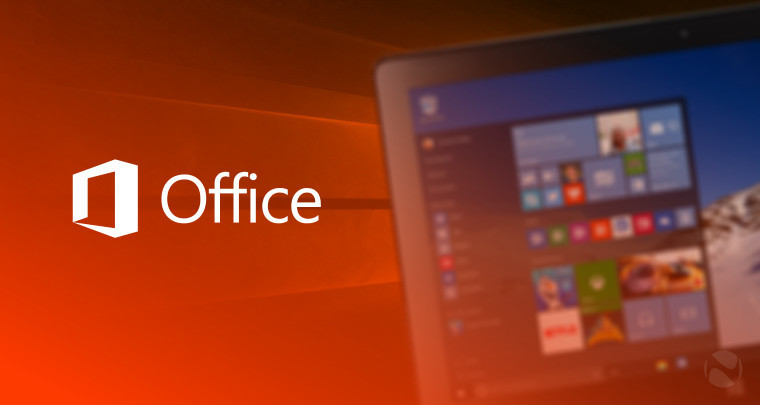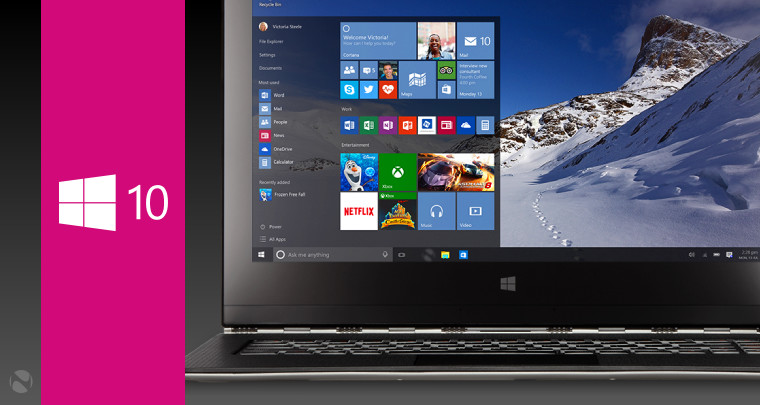Last year, Microsoft attracted dozens of new manufacturers to its Windows ecosystem, enticing them with free OS licensing for phones, small tablets and low-cost notebooks. In the absence of its long-awaited touch-friendly Office apps for Windows, Microsoft also allowed manufacturers to bundle a free one-year Office 365 Personal subscription, worth $69.99, with these devices.
This subscription allowed users to install the full Office 2013 desktop applications on their devices, and also included 1TB of OneDrive cloud storage, as part of the 365 package. But alongside the launch of its new OS, Microsoft has released its new Office Universal apps, which are free to use on these smaller devices.
I've been asked a few times recently how the launch of these Windows Store apps will affect Microsoft's free Office 365 offer on new devices. Based on official info and a bit of input from our sources, we're here to clear things up.

A source contacted me earlier this week to point out that Microsoft is phasing out the Office 365 offer across all devices with Windows 10 except its own Surface 3. Indeed, this makes perfect sense when you think about it - the only reason that Microsoft introduced the offer was to make up for the fact that its next-gen Office touch apps remained far from ready. As it released free Office apps on other platforms, the company needed some form of equivalent offering for its Windows customers.
Microsoft isn't pulling the offer with immediate effect, though; indeed, it will remain available for small tablets and ultra-affordable notebooks sold with Windows 8.1, but all those with Windows 10 pre-installed will no longer come with a free year of Office 365.
We asked Microsoft to help clarify things, and to confirm the details of what we'd been told, and in a statement, a representative for the company said:
As part of our company strategy to reinvent productivity, we want to enable productivity for people on every device, whether Windows, Android or iOS. So we’ve made Office available on all of these platforms and across desktop PCs, tablets and phones. As we’ve disclosed previously, many Windows devices 10.1” and smaller will come with Office Mobile. Customers can purchase an Office 365 subscription to use fully installed Office desktop and mobile applications and get access to Office 2016 and the latest new features as they become available.
Let's break it down: what does this all mean in practice?
On devices sold with Windows 10 pre-installed, the new Universal apps - known as 'Office Mobile' - replace the Office 365 offer. These apps don't do everything that the equivalent Word, Excel and PowerPoint desktop applications offer, but they do cover most of the functionality that the majority of users will need. Inevitably, some buyers will be disappointed not to get full-fat Office free with their $80 tablet, but for most users, the Universal apps will likely be more than sufficient.
However, Microsoft's new Universal Windows Platform works only with Windows 10 devices, which means that these apps aren't available on Windows 8.1. Since the company still needs to offer Windows 8.1 users free Office functionality - given that it does so on iOS, Android and Windows 10 - the free Office 365 offer will continue to be available on devices sold with Windows 8.1.
Indeed, we're not aware of any immediate plans to withdraw the offer for Windows 8.1 devices.

The Windows 10 upgrade
All Windows 8.1 consumer devices are eligible for free upgrade to Windows 10, so if you buy a small tablet or ultra-low-cost laptop with 8.1 today, you'll be able to get the new OS free of charge - and as we've discussed, these devices will also come with the Office 365 offer.
However, many tablets and notebooks that originally launched with Windows 8.1 will eventually be sold with Windows 10 onboard. Microsoft, for example, continued to ship its Surface tablets with 8.1 after Windows 10's launch until those stocks were depleted, but it's now offering the Surface 3 and Pro 3 with the new OS pre-installed.
Not all devices currently sold with 8.1 will get the same treatment - some models will simply be discontinued, and replaced with newer devices designed for Windows 10. But those devices that do eventually get Windows 10 pre-installed will no longer qualify for the free Office 365 offer, instead shipping with the Office Mobile apps onboard.
One example of this popped up yesterday. UK retailer Tesco launched its new low-cost 8-inch Connect tablet with Windows 10 onboard, but with no Office 365 offer in sight. Instead, the product description highlights the benefits of the pre-installed 'mobile-first' Office apps. The Connect is actually just a rebadged version of the Linx 8 tablet, which is still on sale with Windows 8.1 onboard and includes... yep, free Office 365.
So if you really want to get Office 365 free with your device, make sure it's got Windows 8.1 onboard, and then upgrade to Windows 10 free later.

What about the Surface 3?
Microsoft's Surface 3 tablet comes with the same one-year Office 365 Personal subscription that we've been discussing here. However, that offer is actually separate to the one that Microsoft applies to small tabs and cheap laptops - indeed, at 10.8-inches, the Surface 3's display is larger than the 10.1-inch cut-off for that offer.
Microsoft said nothing about any plans to withdraw this separate offer from the Surface 3 when we asked them, so it seems likely that this freebie will remain available for some time to come.
Can other manufacturers still choose to offer the free Office 365 deal on Windows 10 devices if they want to?
Microsoft said it does "not disclose details of the arrangements we have with our OEM partners". However, as we understand it, since Microsoft is no longer bearing the financial cost of giving away Office 365 subscriptions with cheap Windows devices, manufacturers will have to cover this cost themselves.
Ultra-affordable hardware with wafer-thin margins doesn't offer manufacturers much room to give away pricey freebies - which is precisely why Microsoft offers the Office Mobile apps as an alternative - so don't hold your breath for any more free Office 365 on the cheapest devices.
How will these changes affect my existing Office 365 Personal subscription?
If you already picked up a free Office 365 Personal subscription, you've got nothing to worry about - what we've been discussing here only affects those who haven't yet bought a device. You can continue to use whatever remains of your one-year sub, and then pay to renew, or simply uninstall the desktop applications and switch to the free (but more limited) Universal apps instead.
Hopefully, that's cleared a few things up for those who have no doubt endured many sleepless nights worrying about these matters - but let's face it, for most users, the 'loss' of the Office 365 subscription offer won't be an issue, since the new Universal apps will meet most of their needs.
Update (08/14/15; 1400 EDT): Microsoft has requested that we clarify that its statement above does not constitute any form of official confirmation of the information presented to us by our sources, and has stated that the details presented above are 'purely speculative'.

















40 Comments - Add comment